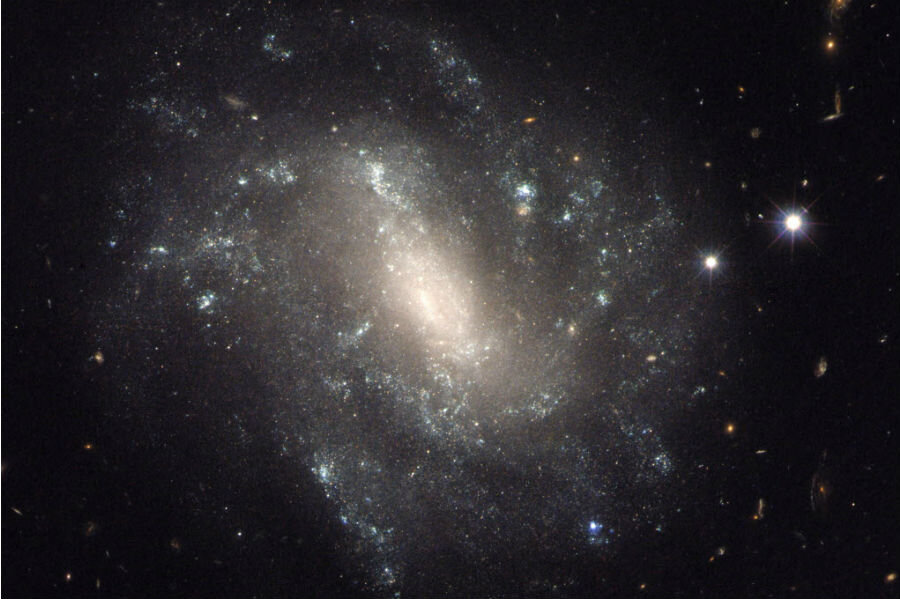Is dark energy a real thing? Maybe not, new study suggests.
Loading...
For decades, most scientists have accepted that "dark energy" is a significant, if mysterious, force in the universe.
According to prevailing cosmological theories, the universe is expanding, but not at a constant rate. As the universe gets older, its growth seems to accelerate over time, something that would be impossible without some sort of extra energy being added to the overall system. Dark energy, the theory goes, accounts for nearly 70 percent of all energy in the observable universe.
But a new study from Oxford has called dark energy's existence into question, saying that the data is flawed or based on observations that previously assumed that dark energy was already a universal constant. If this is the case, then scientists may have to go back to reevaluate their understanding of the universe and how it works.
The researchers' study, published in the journal Scientific Reports, found that the data in their study of supernovae supported the theory that the universe is expanding at a constant rate. Because the rate of expansion is constant, there is no dark energy being added to speed up the process. This theory reflects a model of steady expansion that was widely accepted before dark energy was hypothesized in the late 1990s.
Both this study and the 1990s theory of dark energy are based on Ia supernovae, known to scientists as "standard candles" for measuring the size of the universe. These types of novae occur when a white dwarf star is destroyed, which brightens and fades in an especially predictable way, allowing scientists to more accurately determine the distance of the star based on its luminosity. In the initial 1990s study, researchers found that these explosions were fainter than expected, and they concluded that the universe's expansion was accelerating, and therefore fueled by some kind of previously unknown energy.
During those initial observations, however, researchers lacked access to the wealth of Ia supernovae observations we have now. The Oxford study set out to fine-tune the original research by increasing the initial sample size of the groundbreaking study.
"The discovery of the accelerating expansion of the universe won the Nobel Prize, the Gruber Cosmology Prize, and the Breakthrough Prize in Fundamental Physics," said Subir Sarkar, lead author of the new study, said in a statement. "However, there now exists a much bigger database of supernovae on which to perform rigorous and detailed statistical analyses. We analyzed the latest catalogue of 740 Type Ia supernovae – over ten times bigger than the original samples on which the discovery claim was based – and found that the evidence for accelerated expansion is, at most, what physicists call '3 sigma.' This is far short of the '5 sigma' standard required to claim a discovery of fundamental significance."
In science, it is important to have a large enough sample size to ensure that any conclusions you might reach are not the result of a statistical fluke. If you flip a fair coin 10 times, you should theoretically get heads five times and tails five times, since you should get heads half the time and tails half the time. But in practice, it is very possible you will not get five of each, which could lead you to the conclusion that your chances of getting one side is significantly greater than the odds of getting the other. But if you keep flipping the coin hundreds of times, the number of heads and tails should begin to even out, reflecting the actual mathematical 50-50 chance of getting one face or another.
Since dark energy was hypothesized, there has been other evidence to support the theory of dark energy less dependent on large amounts of observed supernovae. But Dr. Sarkar says that those studies are flawed in other respects.
"All of these tests are indirect, carried out in the framework of an assumed model, and the cosmic microwave background is not directly affected by dark energy," he said in the statement, referring the observation of leftover microwave radiation from the Big Bang. Information from the satellite is thought to support the standard model of the universe, including dark energy.
While this discovery throws the existence of dark energy into question, it is not a deathblow for the theory. Other scientists will have to examine the data and reevaluate the strength of current theories about the nature of the universe.
"Naturally, a lot of work will be necessary to convince the physics community of this, but our work serves to demonstrate that a key pillar of the standard cosmological model is rather shaky," said Sarkar. "Hopefully this will motivate better analyses of cosmological data, as well as inspiring theorists to investigate more nuanced cosmological models."








